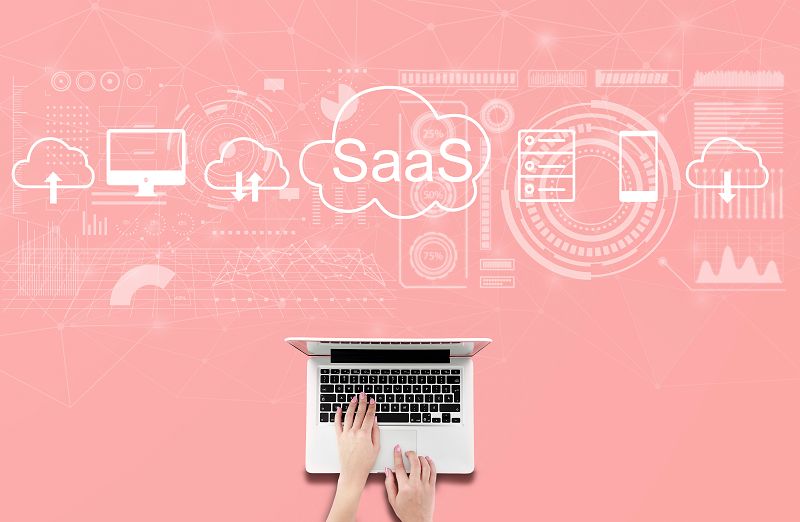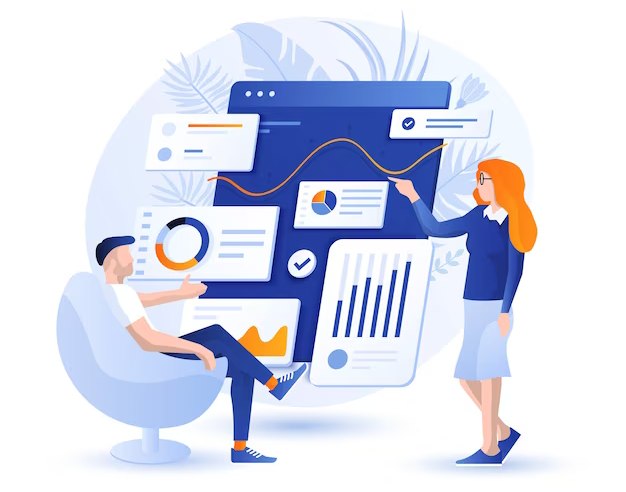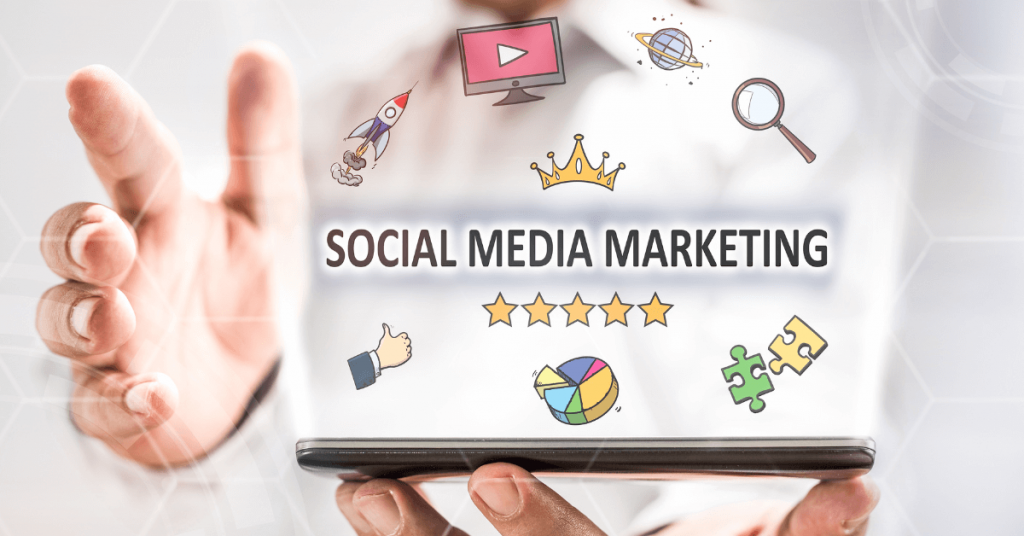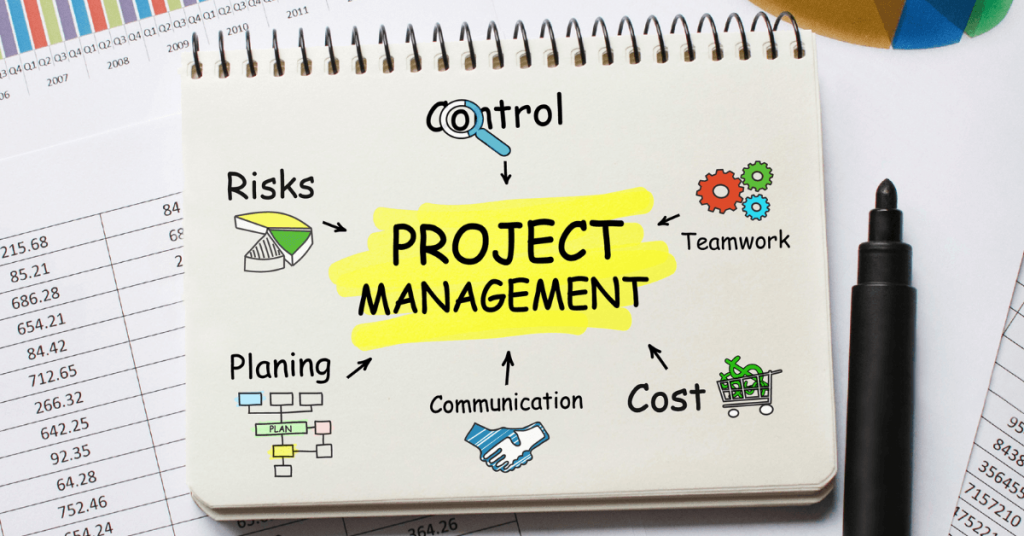In the fast-paced and competitive world of Software as a Service (SaaS), having effective marketing strategies is crucial to stand out and capture the attention of your target audience. With the SaaS landscape constantly evolving, it’s essential to keep up with the latest trends and approaches to ensure your marketing efforts yield optimal results.
In this blog post, we’ll delve into the 6 Best SaaS Marketing Strategies for 2025 that can help you gain a competitive edge and drive growth.
What is a SaaS Marketing Strategy?
A SaaS (Software as a Service) marketing strategy refers to the comprehensive plan and tactics employed by a SaaS company to promote, sell, and distribute its software products as subscription-based services to customers. This strategy is tailored to the unique characteristics and challenges of the SaaS business model, where customers pay a recurring fee for ongoing access to the software rather than making a one-time purchase.
Ultimately, a successful SaaS marketing strategies involves a mix of inbound and outbound marketing tactics, customer-centric approaches, and a deep understanding of the SaaS business model and its dynamics.

How do I create a SaaS Marketing Plan?
Creating a SaaS marketing plan involves a systematic approach to outline your goals, target audience, strategies, tactics, and measurement methods. Here’s a step-by-step guide to help you create an effective SaaS marketing plan:
1. Define Your Objectives:
Clearly articulate your SaaS business goals. Are you aiming to increase revenue, grow your user base, improve customer retention, or enhance brand awareness? Each objective will have a different impact on your marketing strategies and tactics.
2. Identify Your Target Audience:
Create detailed buyer personas that include demographics, job roles, pain points, goals, challenges, and preferences. Understanding your audience helps tailor your messaging and content to resonate with them.
3. Analyze Your Competitors:
Research your competitors’ offerings, pricing, marketing strategies, and customer reviews. Identify their strengths and weaknesses, and determine what sets your SaaS product apart.
4. Set Key Performance Indicators (KPIs):
Choose specific KPIs that align with your objectives. For instance, if your goal is customer acquisition, you might track SaaS metrics like website traffic, conversion rates, and cost per acquisition.
5. Develop Your Value Proposition:
Craft a clear and compelling value proposition that highlights how your SaaS product solves specific problems or meets the needs of your target audience better than alternatives. Focus on the unique benefits you offer.
6. Choose Marketing Channels and Tactics:
Based on your audience and goals, select the most appropriate marketing channels and tactics. Content marketing, SEO, social media, email marketing, paid advertising, influencer collaborations, and webinars are some options.
7. Content Strategy:
Develop a content plan that addresses your audience’s pain points and interests. Create a mix of educational, informative, and promotional content. Blogs, videos, webinars, ebooks, and case studies can establish your expertise.
8. User Onboarding and Engagement:
Design a user-friendly onboarding process that guides new users through your SaaS product’s features and benefits. Use in-app tutorials, tooltips, and welcome emails to ensure a smooth start. Engagement tactics might include personalized recommendations and relevant updates.
9. Pricing Strategy:
Determine your pricing model (subscription-based, tiered, usage-based, etc.) and the value proposition for each pricing tier. Clearly explain what features are included in each tier and why users should upgrade.
10. Lead Generation and Conversion:
Develop lead generation strategies like offering gated content, webinars, or free trials in exchange for contact information. Create optimized landing pages with clear calls-to-action (CTAs) to convert visitors into leads.
11. Customer Retention and Expansion:
Plan strategies to retain and engage existing customers. This could involve personalized communication, regular updates about new features, loyalty programs, and cross-selling/up-selling opportunities.
12. Marketing Budget:
Allocate your marketing budget based on the estimated ROI of each channel. Consider factors like advertising costs, content creation expenses, software tools, and personnel salaries.
13. Timeline and Action Plan:
Create a detailed timeline for each marketing activity. Assign responsibilities and set deadlines for tasks, campaigns, and content creation. Use project management tools to track progress.
14. Measurement and Analytics:
Set up analytics tools such as Google Analytics, customer relationship management (CRM) systems, and marketing automation platforms. Monitor KPIs, analyze data, and gather insights to inform decision-making.
15. Risk Assessment and Contingency Plans:
Identify potential risks that could impact your plan, such as changes in the competitive landscape or unexpected shifts in market trends. Develop contingency plans to address these risks and adapt if needed.
16. Regular Review and Optimization:
Regularly review your marketing plan’s performance against your KPIs. Use data-driven insights to identify what’s working and what needs improvement. Continuously optimize your strategies to achieve better results.
Remember that your SaaS marketing plan should be flexible and adaptable to changes in the market, customer feedback, and the evolving needs of your business. Regularly iterate and refine your plan to stay competitive and achieve your objectives.
What Are SaaS Marketing Strategic Considerations?
- Know Your Ideal Customer: Understanding your ideal customer involves defining the characteristics that make someone a perfect fit for your SaaS product. Consider factors like industry, company size, job roles, pain points, goals, and challenges. This knowledge helps you tailor your marketing efforts and product features to precisely address your target audience’s needs.
- Understand Buyer Personas: Buyer personas are detailed, semi-fictional representations of your ideal customers. They encompass demographics, behaviour patterns, motivations, and pain points. Creating these personas helps you empathize with your audience and craft more relevant and effective marketing messages.
- Understand Your Competition: Thoroughly researching your competitors allows you to identify what they do well and where they fall short. This information can guide your positioning and differentiation strategies. By understanding the competitive landscape, you can emphasize your unique value and address gaps that competitors might have missed.
- Develop a Unique Selling Proposition (USP): Your USP is the distinctive factor that sets your SaaS product apart from the competition. It highlights the key benefits that customers can only get from your product. Your USP should be compelling and easy to understand, making it clear why customers should choose your solution over others.
These considerations lay the foundation for a well-defined and effective SaaS marketing strategy. They help you align your efforts with your target audience’s needs, communicate your unique value effectively, and differentiate yourself in a competitive market.

Best SaaS Marketing Strategies To Grow Faster
The following SaaS marketing strategies will assist you in generating more targeted leads, scaling customer acquisition, streamlining customer onboarding, and decreasing customer attrition.
So, Let’s get started!
1. Content Marketing Strategies
a. High-Quality Blogging
In the SaaS industry, content is king. Maintaining an informative and engaging blog not only establishes your authority but also attracts and educates potential customers. Regularly publishing well-researched articles on industry trends, best practices, and how-to guides positions your brand as a valuable resource. Incorporating SaaS search engine optimization (SEO) techniques helps your content rank higher in search results, increasing its discoverability.
Your blog should cover a variety of topics related to your software’s niche. Address pain points, provide step-by-step guides, and offer insights into industry developments. Use a mix of short and long-form content to cater to different reading preferences. Engage with your audience through comments and encourage them to share their thoughts and questions.
b. Video Content Creation
The power of video cannot be underestimated in SaaS marketing. Platforms like YouTube, LinkedIn, and TikTok offer excellent opportunities to share video content. Consider creating tutorials showcasing your software’s features, demonstrating its value, and offering solutions to common pain points. Engaging with your audience through thought leadership videos or behind-the-scenes glimpses can foster a deeper connection.
Utilize storytelling in your videos to make them relatable and memorable. Showcasing real-world scenarios where your software solves problems can resonate with your audience. Use concise scripts and high-quality visuals to keep viewers engaged. Don’t forget to include a strong call-to-action at the end of your videos, directing viewers to take the next step, such as signing up for a free trial or visiting your website.
c. Interactive Content
Interactive content adds an exciting dimension to your SaaS marketing strategy. Quizzes, polls, calculators, and interactive infographics engage users and provide a personalized experience. These forms of content not only capture attention but also collect valuable insights about your audience’s preferences, pain points, and needs, which can inform your future marketing efforts.
Create interactive tools that allow users to input their specific information and receive personalized results. For instance, if you offer project management software, develop a calculator that estimates time saved using your tool compared to traditional methods. Such tools not only engage users but also demonstrate the concrete benefits of your software.
2. Social Media Strategies
a. Platform Selection
Choosing the right social media platforms is crucial for effective SaaS marketing. LinkedIn is a powerhouse for B2B SaaS, allowing you to connect with professionals, share insights, and establish partnerships. Instagram, on the other hand, caters well to a visually appealing approach, showcasing your software in action. Twitter is ideal for real-time engagement and sharing industry news.
Tailor your content to the specific platform’s strengths. On LinkedIn, share thought-provoking articles, industry analyses, and success stories. Use Instagram to showcase your software’s user interface, with aesthetically pleasing visuals. On Twitter, engage in conversations with industry experts, participate in relevant hashtags, and share quick tips or updates.
b. Influencer Partnerships
Collaborating with industry influencers and thought leaders can give your SaaS marketing a significant boost. Their endorsements lend credibility to your brand and expose you to their established audience. Partnering with influencers who align with your software’s niche can expand your reach and help you tap into new customer segments.
Identify influencers who have a genuine interest in your software’s niche. Approach them with a clear value proposition and the benefits of working together. Influencers can create content that showcases your software in action, provide reviews, or offer tutorials. The authenticity and authority they bring to the table can greatly enhance your brand’s visibility and reputation.
c. User-Generated Content Campaigns
User-generated content (UGC) can be a game-changer in building trust and authenticity. Encourage your users to share their success stories, experiences, and creative use cases for your software. Highlighting UGC on your social media platforms and website not only showcases real-world value but also fosters a sense of community around your brand.
Launch UGC campaigns that encourage users to share their stories, screenshots, or videos of how they use your software. Offer incentives such as featuring their content on your official channels, giving them exclusive access to new features, or entering them into contests for rewards. UGC not only provides social proof but also creates a strong emotional connection between your customers and your brand.
3. Email Marketing Strategies
a. Personalized Email Campaigns
Personalization is the heart of effective email marketing in the SaaS industry. Segment your email list based on user behavior, demographics, and preferences. Craft tailored campaigns that resonate with each segment, addressing their specific pain points and needs. Personalization not only increases open and click-through rates but also enhances the overall customer experience.
Start by collecting relevant data from your subscribers during the sign-up process. Use this information to send targeted content and offers that align with their interests. Incorporate dynamic content that changes based on the recipient’s behavior or preferences. For example, if a user has been exploring your project management features, send them an email highlighting how your software streamlines project collaboration.
b. Drip Campaigns
Drip campaigns are a strategic way to nurture leads and guide them through the customer journey. By sending a series of targeted emails over time, you can educate your leads about your software’s benefits, features, and use cases. Drip campaigns are particularly effective for onboarding new customers, keeping them engaged, and encouraging upsells.
Create a drip campaign that starts with a warm welcome and an introduction to your software’s core features. As the campaign progresses, send more in-depth guides, case studies, and success stories. Tailor the content based on the lead’s interactions with previous emails. For instance, if a lead clicked on a guide about data security, follow up with an email highlighting your software’s robust security features.
c. Cart Abandonment Recovery
Recovering potential lost sales is a smart approach in SaaS email marketing. Sending personalized emails to users who abandon their carts can remind them of the value your software provides. Offering incentives like discounts or extended trial periods can incentivize them to complete the purchase, boosting your conversion rates.
Craft a cart abandonment email that not only reminds the user of the items they left in the cart but also emphasizes the benefits and features of your software. Offer an exclusive discount or a limited-time offer to create a sense of urgency. Include a prominent CTA that leads them back to their cart, making it easy for them to complete the purchase.
4. SEO and SEM Strategies
a. On-Page SEO Optimization
Optimizing your SaaS website for search engines is essential for organic traffic growth. Conduct thorough keyword research to identify the terms your target audience is searching for. Incorporate these keywords naturally into your website’s content, meta tags, and headings. By providing valuable and relevant content, you increase the chances of ranking higher in search results.
Focus on long-tail keywords that reflect specific queries your target audience might have. Create in-depth cornerstone content that covers broad topics comprehensively. Additionally, create supportive blog posts that dive deeper into specific aspects of the topic. This approach not only boosts your chances of ranking for multiple relevant keywords but also establishes your website as a go-to resource for information.
b. Pay-Per-Click Advertising
Pay-Per-Click (PPC) advertising is a powerful way to drive targeted traffic to your SaaS website. Platforms like Google Ads allow you to bid on keywords related to your software. When users search for those keywords, your ads appear at the top of the search results, increasing your visibility. Craft compelling ad copy that highlights your software’s unique value propositions.
Start by identifying high-intent keywords that potential customers might use when looking for software solutions. Create specific ad groups for different features or use cases of your software. Craft ad copy that addresses the pain points your software solves and includes a strong call to action. Direct users to dedicated landing pages that align with the ad’s content, providing a seamless experience.
c. Landing Page Optimization
A well-designed landing page is the key to converting visitors into leads or customers. Implement A/B testing to experiment with different layouts, headlines, and call-to-action (CTA) buttons. A clear and persuasive CTA guides users toward the desired action, whether it’s signing up for a trial, downloading an ebook, or requesting a demo.
Keep your landing pages focused and clutter-free. Use persuasive headlines that clearly communicate the value proposition of your software. Highlight the benefits users will gain by using your software, addressing their pain points and challenges. Include trust signals such as customer testimonials, awards, or security badges to build credibility. Optimize your landing pages for fast load times and mobile responsiveness to ensure a smooth user experience.
5. Customer-Centric Strategies
a. Exceptional Customer Support
Outstanding customer support sets your SaaS company apart. Implement chatbots to provide instant assistance and guide users through common queries. Create a comprehensive knowledge base with articles, tutorials, and FAQs to empower users to find solutions on their own. Swift issue resolution and proactive communication build trust and loyalty.
Your customer support team should be well-trained and knowledgeable about your software’s features. Provide multiple support channels such as live chat, email, and phone support. Monitor social media platforms for mentions and queries, promptly responding to user feedback. When addressing customer issues, focus on providing solutions and going the extra mile to ensure their satisfaction.
b. Customer Success Stories
Sharing customer success stories humanizes your brand and demonstrates the real-world impact of your software. Case studies and testimonials highlight the challenges your software helped customers overcome and the tangible results they achieved. Prospective customers are more likely to convert when they can relate to the success of their peers.
Create in-depth case studies that outline the customer’s initial pain points, the solution your software provided, and the quantifiable benefits they experienced. Include metrics such as time saved, increased productivity, or revenue growth. Whenever possible, use direct quotes from the customer to add authenticity to the story. Pair the case study with compelling visuals that showcase your software’s interface and features in action.
c. Free Trials and Freemium Models
Offering free trials or freemium versions of your software is a powerful strategy to let users experience its value firsthand. This “try-before-you-buy” approach gives potential customers a taste of what your software can do for them. Ensure the trial period is long enough for users to fully explore its features and benefits.
Design a user-friendly onboarding process that guides trial users through the key features and functionalities of your software. Provide tutorials, videos, and tooltips to help them get started. Highlight the value they’ll receive during the trial period and emphasize the seamless transition to a paid plan if they choose to upgrade. Keep track of user interactions during the trial to personalize follow-up communications and nurture them towards conversion.
6. Data-Driven Strategies
a. Analytics and Metrics
Data is the backbone of successful SaaS marketing. Continuously monitor Top SaaS Metrics such as churn rate, customer acquisition cost (CAC), and customer lifetime value (CLTV). These metrics provide insights into the health of your business and the effectiveness of your marketing strategies. Use data to identify trends and make informed decisions.
Utilize analytics tools to track user behavior on your website and within your software. Analyze which features are most popular, where users drop off in the conversion funnel, and how they engage with your content. Regularly review your marketing campaigns’ performance to identify what’s working and what needs improvement. Adjust your SaaS marketing strategies based on data-driven insights to optimize your efforts for maximum impact.
b. Retargeting Campaigns
Retargeting, or remarketing, is a tactic that involves showing ads to users who have previously visited your website but didn’t convert. These ads keep your brand top-of-mind and encourage users to return and take the desired action. Customize your retargeting ads based on the pages users visited, keeping the message relevant and enticing.
Segment your retargeting audience based on their interactions with your website. Create specific ads that address the reasons they might not have converted. For example, if a user explored your pricing page but didn’t sign up, send them an ad highlighting a limited-time discount on your plans. Use dynamic retargeting to display ads showcasing the specific features or products they viewed, increasing the likelihood of conversion.
c. Predictive Analytics
Predictive analytics takes data-driven marketing a step further by using AI-powered insights to identify potential leads. By analyzing user behaviour, past interactions, and demographic information, you can identify individuals who are more likely to convert. This enables you to allocate your resources effectively and focus on high-potential leads.
Implement a predictive analytics solution that integrates with your customer relationship management (CRM) system. This solution should provide lead scores that indicate the likelihood of conversion. Use lead scoring to prioritize your outreach efforts, ensuring that your sales team focuses their energy on leads with the highest potential value. Regularly refine your predictive models based on the outcomes of your campaigns to continuously improve their accuracy.
Conclusion – SaaS Marketing Strategies
In the rapidly evolving world of SaaS marketing, staying ahead requires a multifaceted approach. The 6 Best SaaS Marketing Strategies for 2023 we’ve explored in this blog post provide a comprehensive toolkit to drive growth, engagement, and customer satisfaction.
Whether you’re a newcomer to the SaaS landscape or a seasoned player, integrating these strategies into your marketing plan will ensure that you not only survive but thrive in this dynamic industry. Stay agile, adapt to changing trends, and consistently analyze your results to refine your strategies for sustained success.

